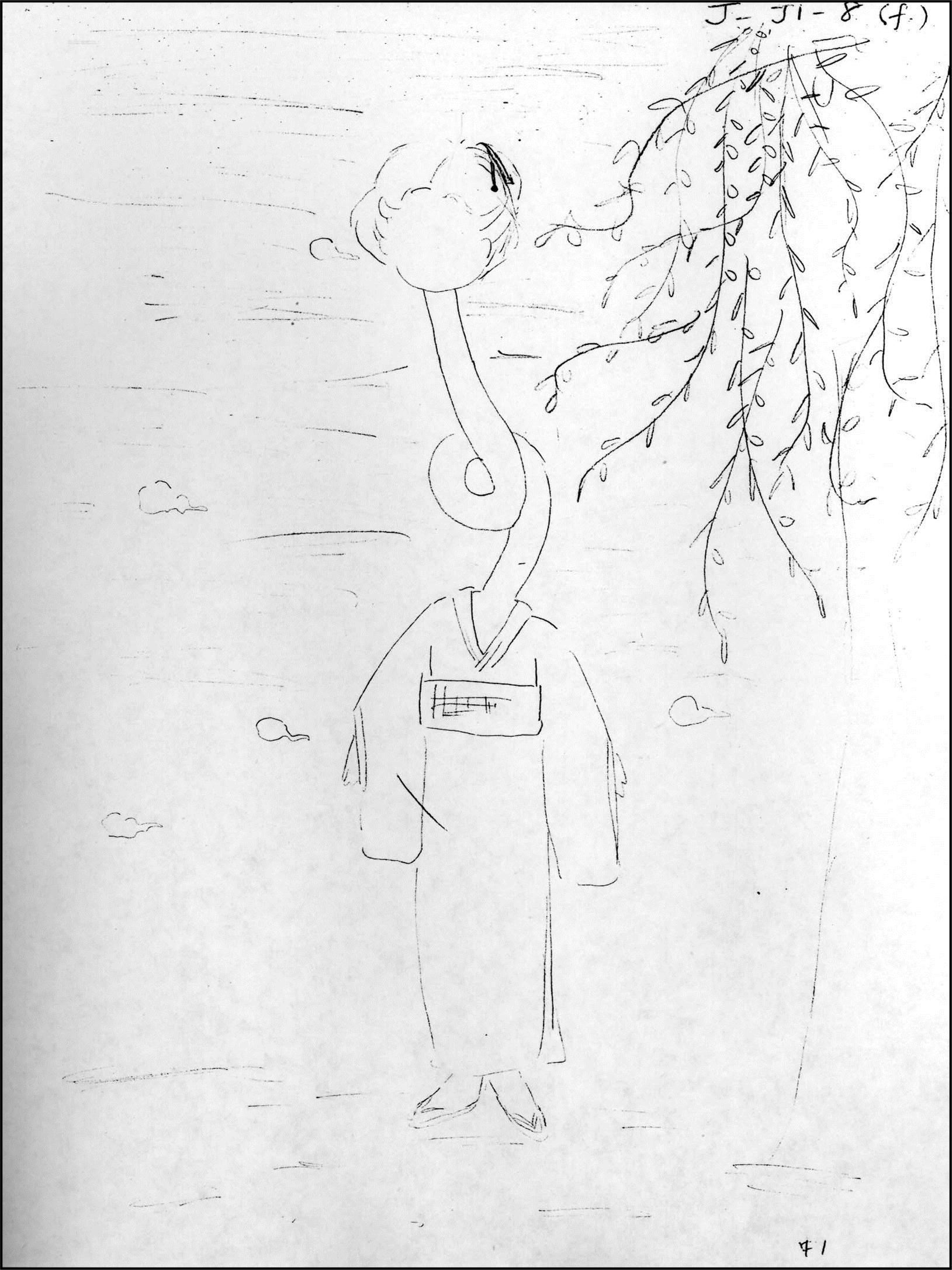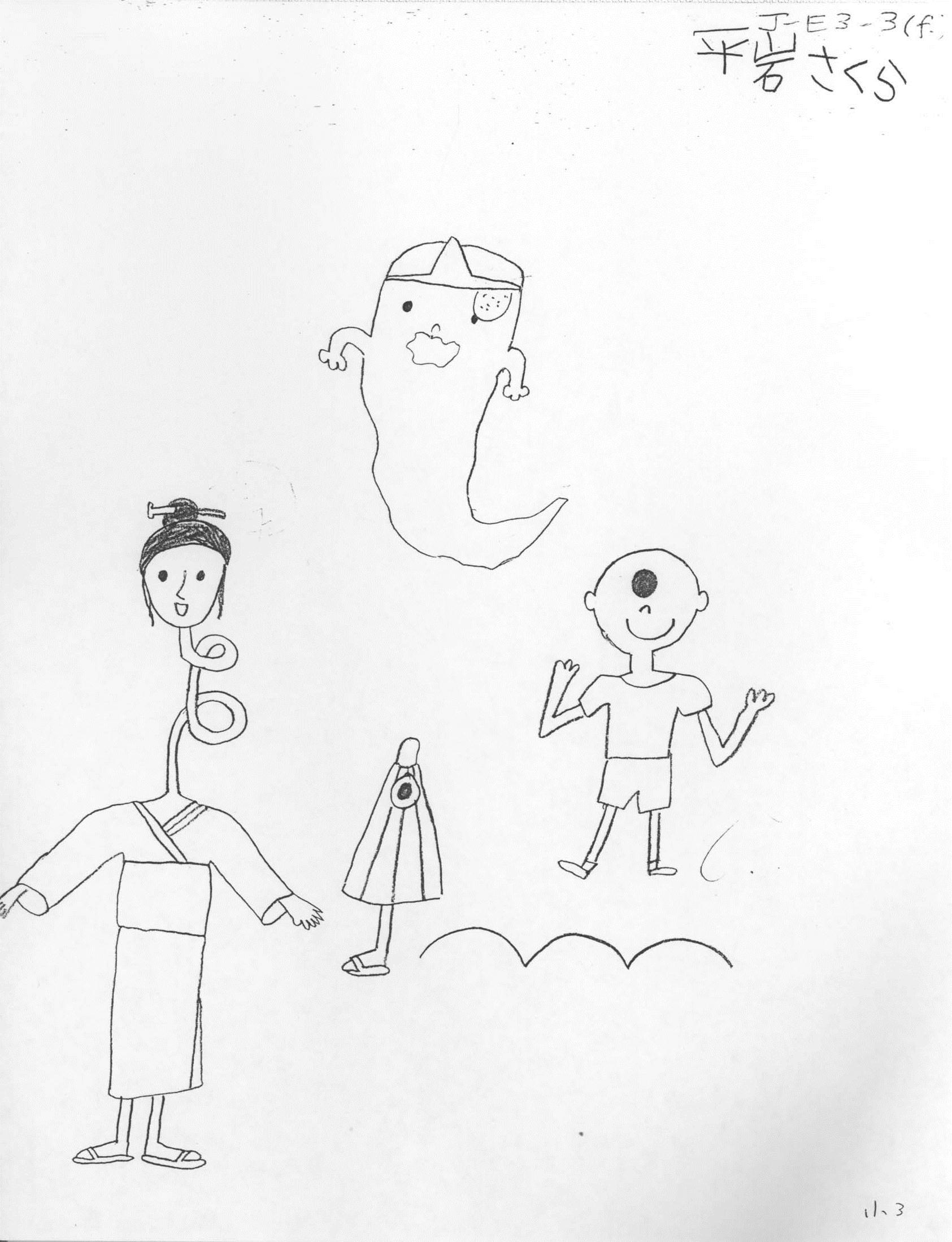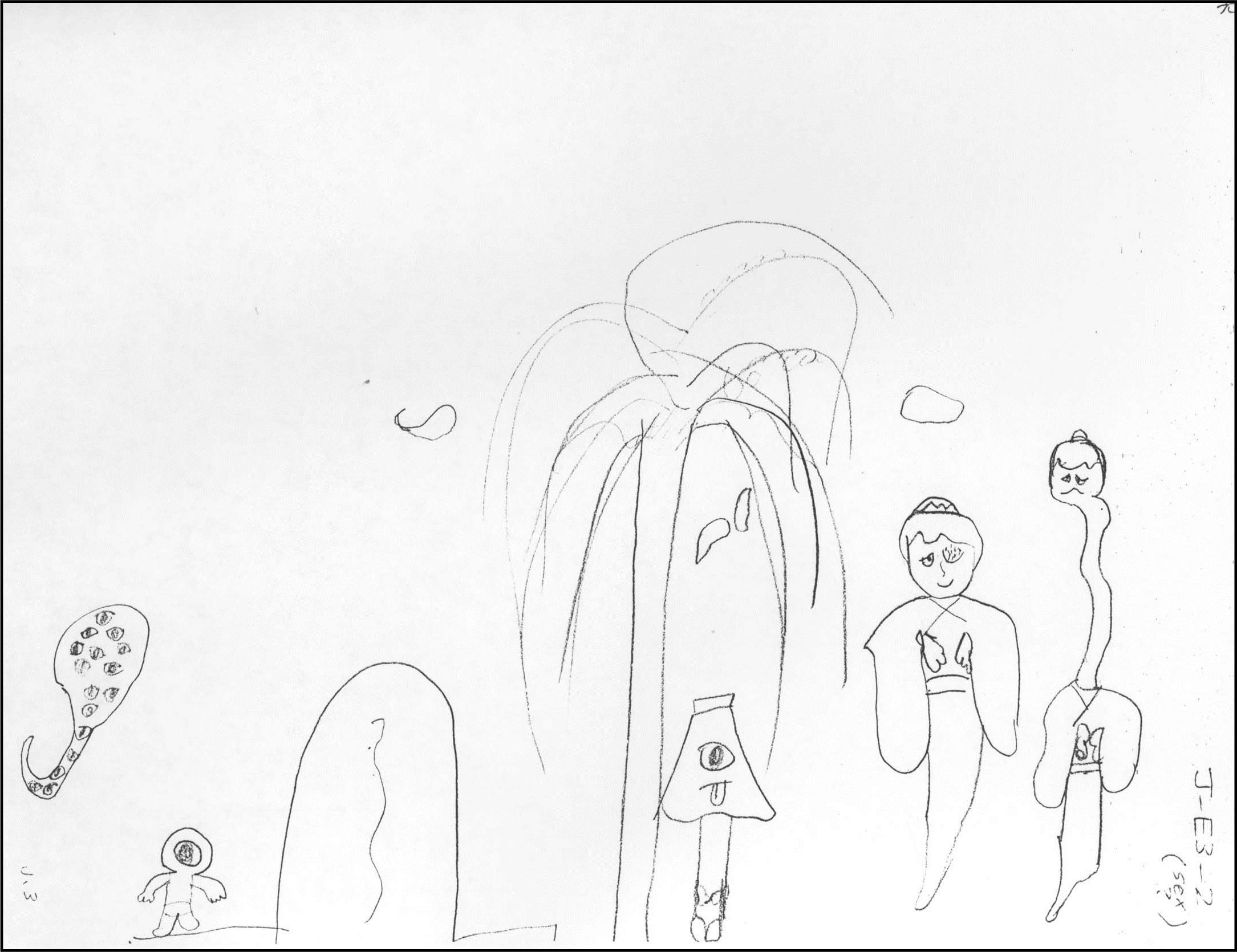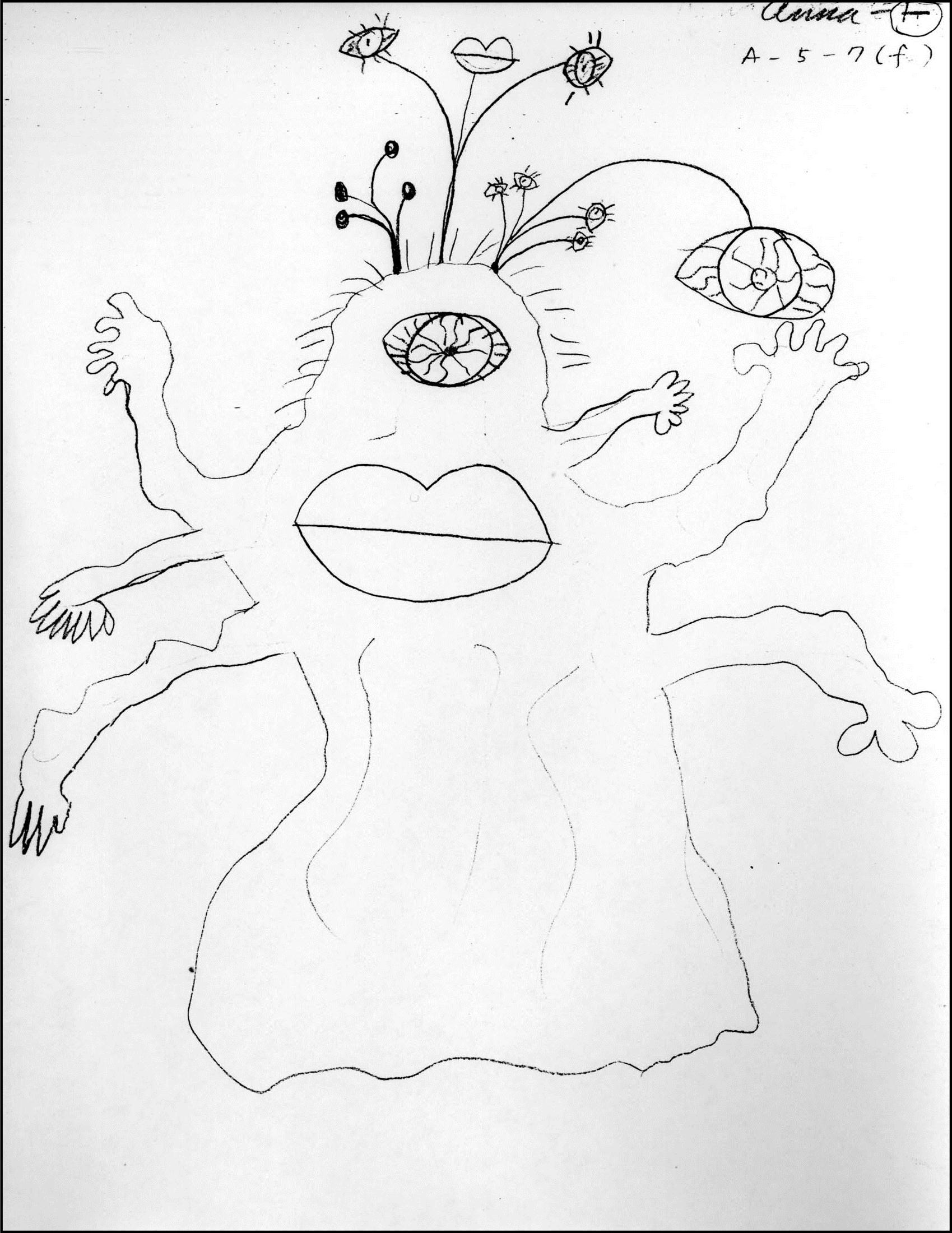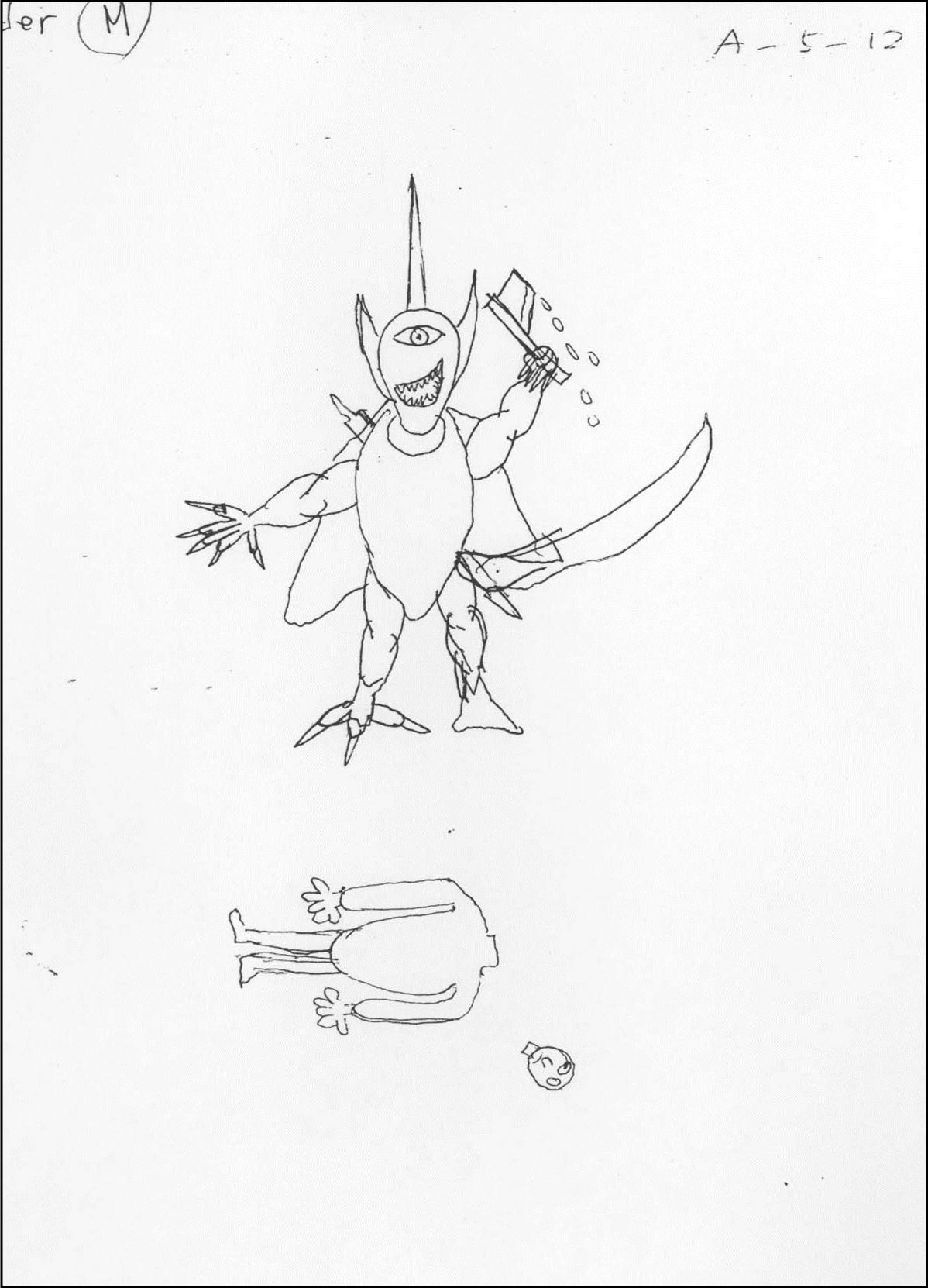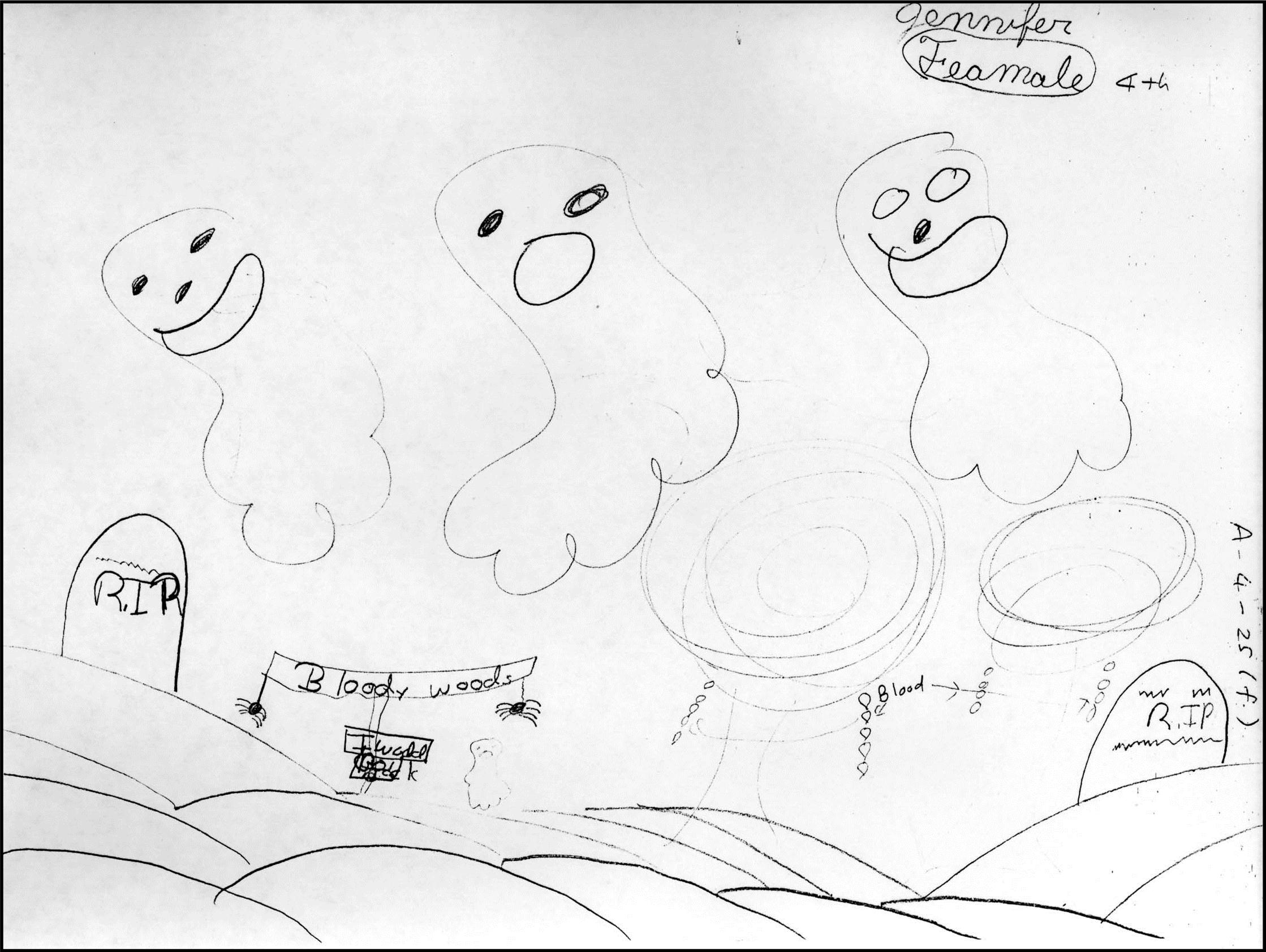The Superstition and Uncanny papers from the SWOFC are diverse with different types of lore. Of course, there are plenty of ghost stories, including ones that have been passed down through generations as well as stories of local places that are thought to be haunted. Superstitious proverbs border the uncanny because they usually posit advice that should be followed to avoid bad luck or evil. For more on local haunts read these Archives and Rare Books Library blog posts about legendary places in Clifton and around UC:
Local Lore: Haunted Buildings of Clifton
The Haunting of Wilson Auditorium


![]()
Hexologist, Johnny Ott (left) and Clifton’s acclaimed Blood House which is rumored to be haunted (right)
![]()
One interesting paper in the collection includes a look at local school children’s perceptions of ghosts. Yasuyo Moriya’s research cross referenced drawings of ghosts collected from Anglo-American children at Fairview German Language School and depictions of ghosts collected from Japanese-American children at a local Japanese language school. Comparing the two samples, Moriya found that Anglo-American children’s drawings of ghosts featured much more blood, body disfigurement and violence than the Japanese American children’s drawings.
The Japanese drawings on the other hand depicted ghosts in the rain, under willow trees or in more traditional Japanese dress. Another interesting image often found in the Japanese American children’s drawings is the “umbrella” or “broken paper lantern” ghost, an image which is entirely absent from the Anglo-American children’s collection
![]()
Japanese American Children’s Ghost Drawings
![]()
![]()
Anglo-American Children’s Ghost Drawings
![]()
![]()
In addition to ghost stories, the collection also features several uncanny UFO legends:
![]()
![]()
Hexology
![]()
 Hexology, hexerie, or the hex, refers to witchcraft and bad luck. Hex signs are most typically painted panels affixed to barns or homes and are meant to bring good luck, prosperity or fertility. One booklet in the collection shows the folk art of hex signs and explains the supposed charms of different pieces.
Hexology, hexerie, or the hex, refers to witchcraft and bad luck. Hex signs are most typically painted panels affixed to barns or homes and are meant to bring good luck, prosperity or fertility. One booklet in the collection shows the folk art of hex signs and explains the supposed charms of different pieces.
![]()
